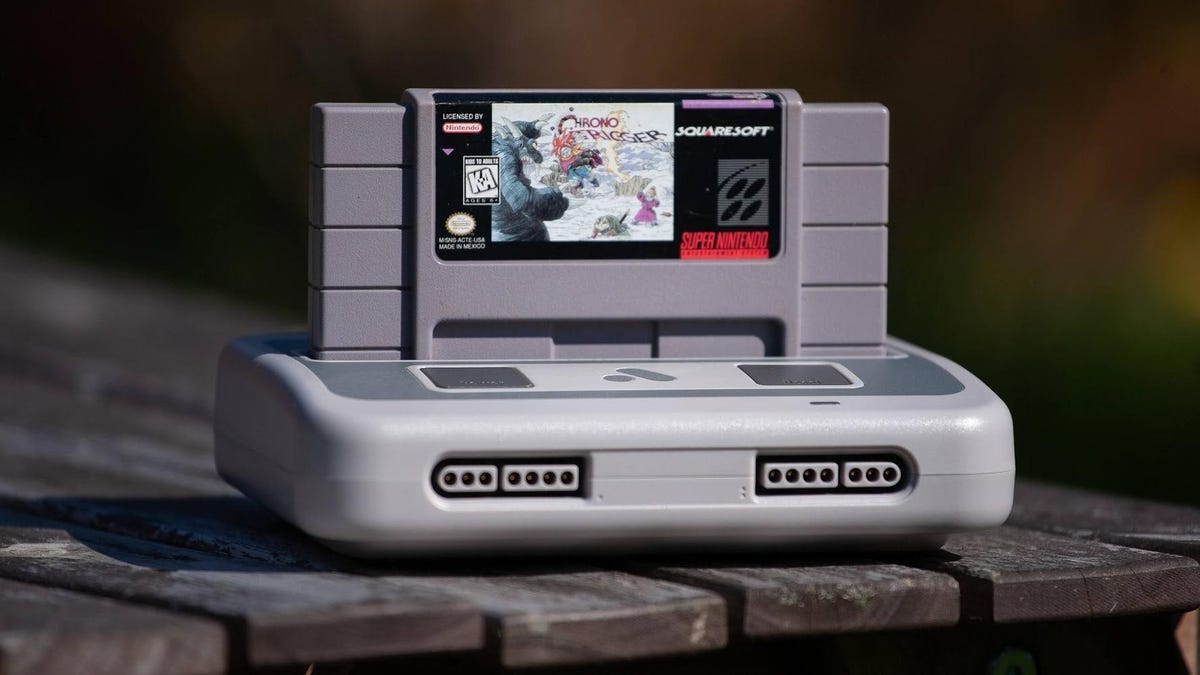
Of everything I’ve covered, MiSTer has the highest crossover potential for satisfying enthusiasts and casual fans alike—its combination of scalability, flexibility, and breadth offers something for everybody. MiSTer boasts a vibrant FPGA development community that’s only just beginning to tap into the technology’s potential, and we’re only going to see more consoles, more compatibility, and more customization as they expand on an already impressive feature set. You can plug one into your modern screen or your CRT, output almost any standard resolution/video signal you’d like, and access a ton of different features like scanline filters, black frame insertion for improved motion blur, robust controller support, and more.
Pros: Endlessly customizable, highly scalable, huge library of hardware and software support, regularly updated with new features
Cons: Expensive and complicated to set up, support for post-16 bit consoles still under development
Now you’re playing with power: Original hardware + scalers
“But, Aidan, I’ve got a collection of retro consoles and games that rivals MetalJesusRocks, but CRTs are lame. I wanna play on my 70″ 4K without the games looking like garbage.” Well, you’ve got options…as long as you’re willing to pony up for them.
The NTSC broadcast standard used in many non-European regions output 480i resolution (240 alternating lines spread top-to-bottom on the TV screen), but video games cleverly cut this in half to more efficiently use console processing power—resulting in a video standard called 240p. Trouble is, most modern TVs don’t care about 240p video because it hasn’t been used much since the ‘90s. This results in poor upscaling of retro game consoles, muddy looking games, and terrible controller lag.
Enter: upscalers. These devices take your game console’s 240p (or 480i, for later consoles) signal and upscale it as cleanly as possible for display on an HD or 4K screen while introducing minimal input lag. They’re kinda magic, honestly. The major downside to scalers is that even the older ones are expensive, and newer ones have been heavily impacted by supply chain issues and increasing component prices. So consider these a higher tier option for those serious about committing long term to original hardware and software—not an entry point.
Mike Chi’s RetroTINK-5X Pro is the leading FPGA-powered upscaler on the market right now—truly impressive, since Chi’s a one-man operation. The 5x in the name refers to the upscaler’s ability to enlarge the video signal by five times (1200p) without quality loss, producing razor sharp pixels and a variety of scanline and retro filters. Similar devices like the OSSC, Framemeister, and RetroTINK-2X Pro offer similar functionality with fewer features at slightly more palatable price points. Chi is hard at work on a RetroTINK 4K, and other upcoming upscalers like the PixelFX Morph and OSSC Pro look to push the technology even further.
(For a more in-depth look at upscalers and FPGA consoles, refer to Brendan Hesse’s previously mentioned breakdown, which covers more options and optimal settings.)
Pros: So many options, broad console support, original hardware experience, gorgeous video quality
Cons: Expensive, requires access to original consoles and games
Scanlines or razor-sharp pixels?
There’s an argument to be made that the best way to play retro games is on CRTs thanks to their unique look and feel. Others want the cleanest image possible—pixels cut right at the source with no distortion. These FPGA and scaling devices often come with a bunch of features that let you emulate the look of older TVs by including scanline and scaling options to soften up the image, with results pretty close to original CRTs. Twitter accounts like @PROPixels and @CRTPixels do regular comparisons between sharp pixels, retro filters, and original CRTs, highlighting various options to get your games looking as good as possible.
Whether you’re into filters or not is a matter of taste, and might even depend on the console or game, but having the option to produce various types of images is one of the most appealing reasons to use a MiSTer or upscaler compared to options like emulation on modern game consoles—especially when you’ve optimized the settings using a tool like 240p Test Suite.
Next level
However you choose to play your old games—on a flatscreen or CRT, with scanlines or raw pixels—there’s no wrong answer. Experiment to find what looks best to you.
I started out with one of Nintendo’s mini consoles and have upgraded to serious original hardware over time, but that doesn’t mean I don’t still have fun playing emulated games on my phone. My biggest piece of advice is to start small—grab a used mini console, check out ROM hacks of your favorite games, sign up for one of Sony, Nintendo, or Microsoft’s subscription service—and see if retro gaming is right for you. Whether you dabble or dive into the deep end, there’s never been a better time to get into old games, and it’s only going to get better from here.

Comentarios recientes